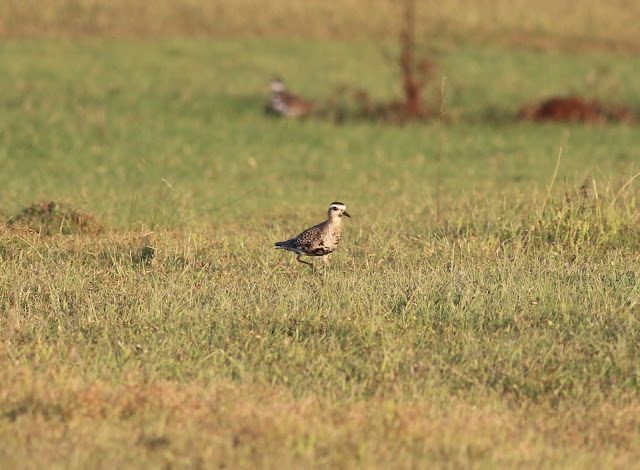I have been neglecting my 5MR in favor of tending to my garden/yard and just spending more time with my family. That being said, I am always keeping my eyes open and snapping some pics here and there.
First up, let's review my birthday treat of a pelagic on the OBX. On the way there I stopped at Mattamuskeet and Lake Landing. The Brewer's Blackbirds are still hanging out at Lake Landing.
Male and female Brewer's Blackbird.

The pelagic itself was a little lackluster but that's the way it goes with pelagics. Sometimes they are good and sometimes they are not.
Lesser Black-backed Gull
Manx Shearwater

Diamond Shoals - read the wikipedia page or even better the write up on this website: http://lighthousefriends.com/light.asp?ID=1690
The below photo is from that website.


Back on land this loon gave me a nice look at it's webbed feet.
And now for some 5MR catch up!
Cedar Waxwing on my Live Oak.
Northern Cardinal
Pine Warbler at Halliburton Park.
Long-tailed Duck at the south end of WB.

American Crow with it's eyelid down. I have video of it calling but I will spare you that.
Blue Jay
Bonaparte's Gull on the south end of WB.
Piping Plovers
American Oystercatcher
Tricolored Heron at Airlie Gardens.
Some type of slider?
Pied-billed Grebe
Hmmm, one of these days I will get me a butterfly guide.
Blue-gray Gnatcatcher
Yellow-rumped Warbler
Northern Parula
B&W Warbler molting its tail.
Purple Martin at the south end of WB.
House Sparrow contemplating the micro plastics messing up his dust bath.
Laughing Gulls are back in full summer plumage.
Ruby-throated Hummer just hanging out on my Weeping Cherry.
The grayish area on the forehead was interesting but I am dismissing it as pollen or something.
Brown Thrasher at the Cross City Trail over by UNC Wilmington.
Brown-headed Nuthatch
More 5MR catch up next installment from after my return from the Yucatan.
First up, let's review my birthday treat of a pelagic on the OBX. On the way there I stopped at Mattamuskeet and Lake Landing. The Brewer's Blackbirds are still hanging out at Lake Landing.
Male and female Brewer's Blackbird.

The pelagic itself was a little lackluster but that's the way it goes with pelagics. Sometimes they are good and sometimes they are not.
Lesser Black-backed Gull
Manx Shearwater

Diamond Shoals - read the wikipedia page or even better the write up on this website: http://lighthousefriends.com/light.asp?ID=1690
The below photo is from that website.
Great Skua!


Back on land this loon gave me a nice look at it's webbed feet.
And now for some 5MR catch up!
Cedar Waxwing on my Live Oak.
Northern Cardinal
Pine Warbler at Halliburton Park.
Long-tailed Duck at the south end of WB.

American Crow with it's eyelid down. I have video of it calling but I will spare you that.
American Robin at Oleander Memorial Gardens.
Blue Jay
Bonaparte's Gull on the south end of WB.
Piping Plovers
American Oystercatcher
Tricolored Heron at Airlie Gardens.
Some type of slider?
Pied-billed Grebe
Hmmm, one of these days I will get me a butterfly guide.
Blue-gray Gnatcatcher
Yellow-rumped Warbler
Northern Parula
B&W Warbler molting its tail.
Purple Martin at the south end of WB.
House Sparrow contemplating the micro plastics messing up his dust bath.
Laughing Gulls are back in full summer plumage.
Ruby-throated Hummer just hanging out on my Weeping Cherry.
The grayish area on the forehead was interesting but I am dismissing it as pollen or something.
Brown Thrasher at the Cross City Trail over by UNC Wilmington.
Brown-headed Nuthatch
More 5MR catch up next installment from after my return from the Yucatan.















































